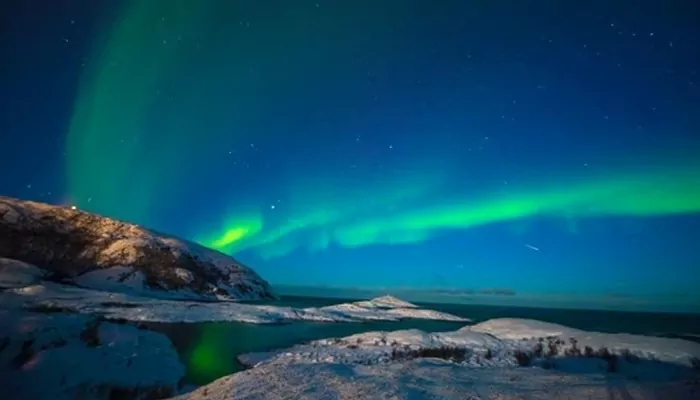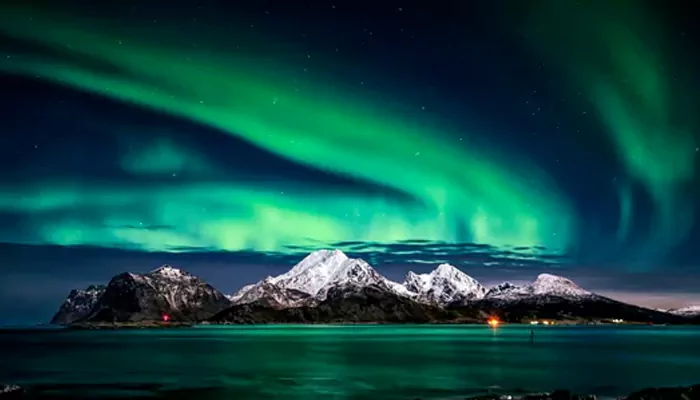The Allure Of Aurora Season: Know Why 2024 Is The Best Year To See Northern Lights
- Sayan Paul
- 1 year ago
- 4 minutes read

Thanks to a rare natural phenomenon, this year's aurora season is more exciting compared to previous years.
"… as if from heaven itself, great curtains of delicate light hung and trembled." - Phillip Pullman (Author)
Call it magic, a dream, spiritual, or anything else that you prefer - the sheer scale of beauty (still an understatement though) the aurora has is unmatched in the truest sense of the term. For travelers, witnessing the aurora is a major tick on the bucket list, and the experience is truly priceless. You get to see something that's beyond your imagination - nothing can ever come close!

As the northern lights or aurora borealis season (typically, late April - March) begins, everyone is now talking about it, with travelers from across the globe flocking to regions like Alaska, Norway, Iceland, Finland, and Greenland. The excitement is specifically sky-high as experts believe this year's northern lights display is the best in recent years - all thanks to a rare phenomenon. What is that? Well, let's learn in detail.
But first, why do northern lights occur?
The northern lights are a display of lights (green, red, blue, and purple) in the sky in the northern hemisphere. It occurs when charged particles from the Sun collide with the Earth's atmosphere, and then they interact with oxygen and nitrogen, producing waves of light in the sky.
As Northern Lights expert Dr. John Mason MBE explained, "The Northern Lights are caused by electrically charged particles that are released by the Sun and travel 150 million kilometers across space to the Earth."

"These charged particles travel across space at varying speeds and, after a few days or so, some of them encounter the Earth’s magnetic field, the magnetosphere, where they are funneled down around the north and south magnetic poles – into regions known as the Auroral Ovals. As the incoming particles collide with atoms and molecules of oxygen and nitrogen in the Earth’s upper atmosphere, they excite them to produce light – the light of the aurora."
Now, why is 2024 the best year to witness the northern lights?
The sun follows an 11-year cycle (known as the solar cycle) based on the changes in the number of sunspots, solar flares, and others. 'Solar Maximum' is where the sun has the greatest number of such phenomena. Also, the sun's surface has the highest magnetic activity this time.
2024 is the best year for Northern Lights.
— Tanya Khanijow (@TanyaKhanijow) February 9, 2024
So if you’re confused between Norway or Finland, I’ve objectively tried to cover literally all points that I could think of! 🧵 pic.twitter.com/v3q2Rx89UY
(Credit: Tanya Khanijow)
Thanks to the Solar Maximum in 2024, there is enhanced solar activity this year - which last occurred 11 years ago. This means more charged particles are traveling from the sun towards the earth, producing better northern light display.
This year, the northern lights are visible even at lower latitudes than usual. Also, on some days, you can witness the spectacle from far away from the northern regions.
It’s no surprise that 🇨🇦’s Northwest Territories is one of the best places in the world to take in the beautiful #NorthernLights! Leaving viewers mesmerized, nature’s greatest light show graces its skies an average of 200 nights per year. 😍
— Canada (@Canada) November 2, 2020
📷roryffarrell/IG pic.twitter.com/dB9TPy3t4N
(Credit: Canada)
So, if you have been planning for a long to experience the magical display, 2024 is the best time for sure. If not this year, you will have to wait for another 11 years to get the same kind of view.
Some Additional Information To Know
The best time to witness northern lights is September and October. During these months, the nights remain longer and the weather milder, while the sky is clearer.
The Northern Lights are immensely unpredictable. So, be ready to change your plans and locations based on forecasts.

You may need to stand outside in the cold for hours to catch a glimpse. Hence, make sure to be prepared. Remember the common saying in Norway, "There's no such thing as bad weather, only bad clothes."



.webp)
.WEBP)
.WEBP)
.webp)
.webp)


.webp)
.webp)
.webp)